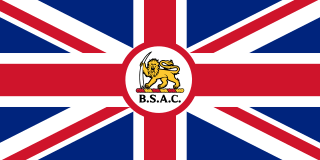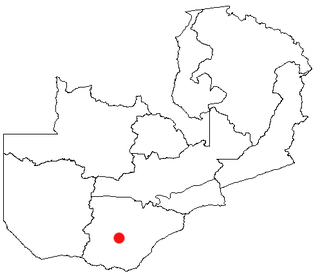 W
WNorthern Rhodesia was a protectorate in south central Africa, formed in 1911 by amalgamating the two earlier protectorates of Barotziland-North-Western Rhodesia and North-Eastern Rhodesia. It was initially administered, as were the two earlier protectorates, by the British South Africa Company (BSAC), a chartered company, on behalf of the British Government. From 1924, it was administered by the British Government as a protectorate, under similar conditions to other British-administered protectorates, and the special provisions required when it was administered by BSAC were terminated.
 W
WGeneral elections were held in Northern Rhodesia on 30 October 1962, with by-elections for several seats held on 10 December. Although the United Federal Party won the most seats in the Legislative Council, and Northern Rhodesian African National Congress leader Harry Nkumbula had made a secret electoral pact with the UFP, Nkumbula decided to form a government with the United National Independence Party.
 W
WGeneral elections were held in Northern Rhodesia on 20 and 21 January 1964. There were two voter rolls for the Legislative Council, a main roll that elected 65 seats, and a reserved roll that elected 10. Africans elected the main roll, whilst Europeans elected the reserve roll. Other ethnicities were allowed to choose which roll to be part of. The United National Independence Party won the elections, taking 55 of the common roll seats. Its leader, Kenneth Kaunda became Prime Minister, leading the country to independence in October that year, at which point he became President. Voter turnout was 94.8% for the main roll and 74.1% for the reserved roll.
 W
WNorthern Rhodesia competed in the Summer Olympic Games for the first time at the 1964 Summer Olympics in Tokyo, Japan. 12 competitors, 11 men and 1 woman, took part in 13 events in 5 sports. These were the only Games for Northern Rhodesia. On 24 October 1964, the country became independent from the UK and changed its name from Northern Rhodesia to Zambia, the first time a country entered an Olympic games as one country and left it as another. For that ceremony, the team celebrated by marching with a new placard with the word "Zambia" on it. They were the only team to use a placard for the closing ceremony.
 W
WBarotziland-North-Western Rhodesia was a British protectorate in south central Africa formed in 1899. It encompassed North-Western Rhodesia and Barotseland.
 W
WThe Federation of Rhodesia and Nyasaland was a colonial federation that consisted of three southern African territories—the self-governing British colony of Southern Rhodesia and the British protectorates of Northern Rhodesia and Nyasaland—between 1953 and 1963.
 W
WThe East African campaign in World War I was a series of battles and guerrilla actions, which started in German East Africa (GEA) and spread to portions of Portuguese Mozambique, Northern Rhodesia, British East Africa, the Uganda Protectorate, and the Belgian Congo. The campaign all but ended in German East Africa in November 1917 when the Germans entered Portuguese Mozambique and continued the campaign living off Portuguese supplies.
 W
WThe Federation of Rhodesia and Nyasaland was a colonial federation that consisted of three southern African territories—the self-governing British colony of Southern Rhodesia and the British protectorates of Northern Rhodesia and Nyasaland—between 1953 and 1963.
 W
WThe Flag of the British South Africa Company was the flag used by the British South Africa Company (BSAC) and Rhodesia under company rule. It was adopted in 1892 and was used until 1923 when the south of Rhodesia voted to become Southern Rhodesia and the north was surrendered to the Colonial Office to become Northern Rhodesia. The flag remained as the Company's commercial flag until 1965. The flag consisted of a British Union Flag with the Company's logo of a lion and tusk on a white circle in the centre with "B.S.A.C." underneath it.
 W
WKalomo is a town in southern Zambia, lying north east of Livingstone, on the main road and railway line to Lusaka. It is home to the Batonga people. It was the first administrative centre of Northern Rhodesia, serving until the capital city was established at Livingstone in 1907. The Administrator's House still survives from this era. It is the capital of the Kalomo District
 W
WNorth-Eastern Rhodesia was a British protectorate in south central Africa formed in 1900. The protectorate was administered under charter by the British South Africa Company. It was one of what were colloquially referred to as the three Rhodesian protectorates, the other two being Southern Rhodesia and Barotseland-North-Western Rhodesia. It was amalgamated with Barotseland-North-Western Rhodesia, another territory administered by the British South Africa Company, to form Northern Rhodesia in 1911.
 W
WNorth-Western Rhodesia, in south central Africa, was a territory administered from 1891 until 1899 under charter by the British South Africa Company. In 1890 the British South Africa Company signed a treaty with King Lewanika of the Barotse, one the most powerful traditional rulers in the territory. The treaty did not confer protectorate status on the territory, as only the British government could confer that status. Nonetheless, the charter gave the territory protection.
 W
WThe Northern Rhodesia Regiment (NRR) was a multi-battalion British colonial regiment raised from the protectorate of Northern Rhodesia. It was formed in 1933 from elements of the Northern Rhodesia Police, which had been formed during Company rule in 1912. Made up of black other ranks and white officers, its motto was "Different in Race, Equal in Fidelity". This motto may have been adopted following native African porters during the First World War being recognised and compensated as couriers by the British.